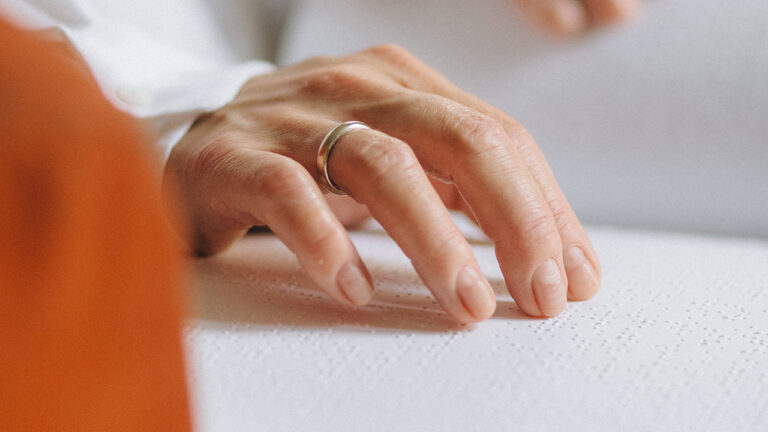Spring has officially arrived, and summer is just around the corner. It is time to go outside, dig in the dirt, enjoy nature, plant beautiful flowers, and grow delicious and healthy veggies! There are numerous ways visually impaired people can use their green thumb.
Some might think that gardening is not for the blind or visually impaired. Or the only way you can do it and enjoy the fruits of your labor is to be a fully sighted person. This is not true. Many people still find joy in gardening after vision loss. The personal interaction with nature. The physical activity of planting. The tactile experience of touch. The ability to be outside in the warm weather. The positive mental and emotional feelings that germinate. And, of course, the beautiful flowers, plants, and foods enjoyed and shared with others. All of these are excellent motivators to garden with vision loss. Now, here are some helpful tips to make your garden grow.
Take inventory of your space.
First, take stock of your surroundings to mark the territory. Depending on what you plan on planting, you might need to build your garden in a bright, sunny area or a cool, shady spot. You can check out the location and then use tactile supplies to mark the area. For example, edging products such as crushed stones, bricks, or fencing are good tools for determining where one area ends and the other begins. For high contrast, paint the stones bright, bold colors like yellow or use tactical supplies like crushed shells or wood chips.
Decide what to plant.
Once you have determined your garden location, decide what you want to plant. Do you like flowers? Vegetables or herbs? Do you wish to grow your items on the ground or in containers on the back porch? Using your senses will help you make the best decision. Think about various textures and scents. Do you want roses? Geraniums? Daisies? Tulips? Or other flowers? Consider the sensory differences in tomatoes, lettuce, cucumbers, or green beans for a vegetable garden. Thinking things through and answering these questions beforehand will help you move in the right direction, resulting in a successful garden.
Gather and organize supplies.
Next, get your supplies organized and labeled to use independently. Keep all your metal gardening tools in a caddy where they are all in one place. Use an apron with multiple pockets to store gardening tools for quick access. Label your seed packets according to your vision level. For braille readers, use Dymo tape adhesive labels affixed to index cards; for low-vision gardeners, make large-print signs with the names of the seeds. Finally, keep a written or audio gardening journal where you can track the type of seeds used, the location of the seeds, and their progress.
Time to plant.
Now for the fun part: the actual planting. Creating your rows of plants and the precise place to plant your seeds can be tricky with vision loss. Read the directions on your seed package to determine how deep to plant the seed and how far apart each seed should be placed. Knowing this information will help you to plant your seeds properly. Sighted help might be needed to accomplish this task.
An easy alternative option is using seed tape. It is too thin sheets of paper with seeds glued in between. They are already proportionally spaced out, so it is just a matter of planting it. Lay the tape on the ground, cover it with topsoil, and add water.
Once you have planted your seed rows, use tactical items to mark them off. Support tresses for vegetables like tomato vines, plastic tubes that run along the rows of seeds, recycled popsicle sticks, and other wood or metal items found at gardening stores can help mark the locations of your plants and vegetables.
After things grow, feeling the leaves and the actual vegetable or noticing the scent will help determine where everything is in your garden. For example, feeling lettuce leaves, touching cucumbers or tomatoes, or smelling herbs like mint and basil are all distinctive enough to determine differences. This will also assist you with the weeding and pruning process.
Additional gardening tips.
Check out these resources for gardening tips for people with vision loss. The Hadley Institute for the Blind and Visually Impaired offers a container gardening course and a gardening discussion group. The National Library Service for the Blind and Print Impaired (NLS) provides a variety of books and magazines on gardening and horticulture.
How does your garden grow? Do you currently have a garden? Have you gardened before losing your vision? Would you like to start gardening after vision loss or try it for the first time? Reach out to Outlook Enrichment for assistance. There are sessions on house plants and gardening as part of our arts and leisure activities.


